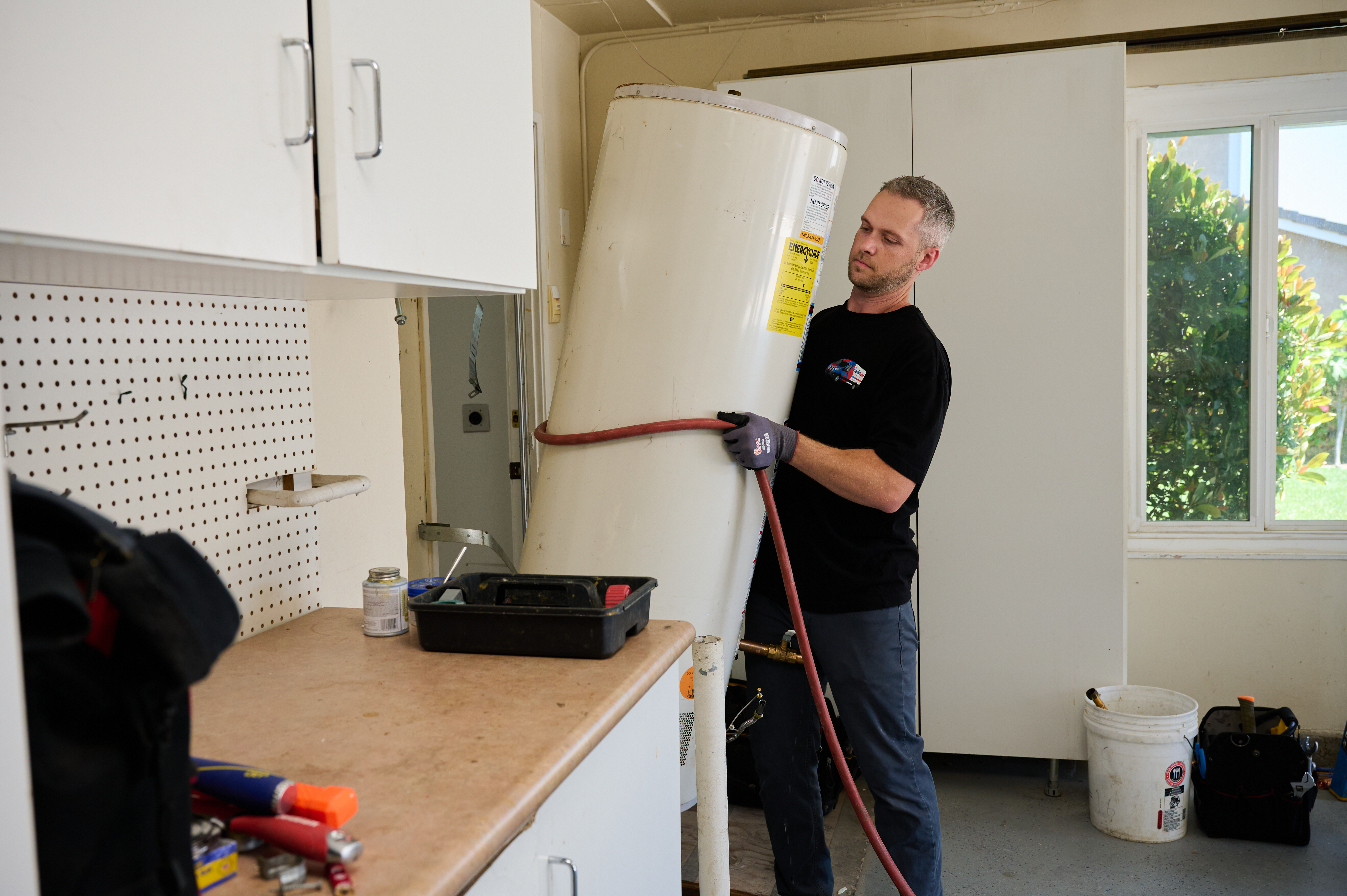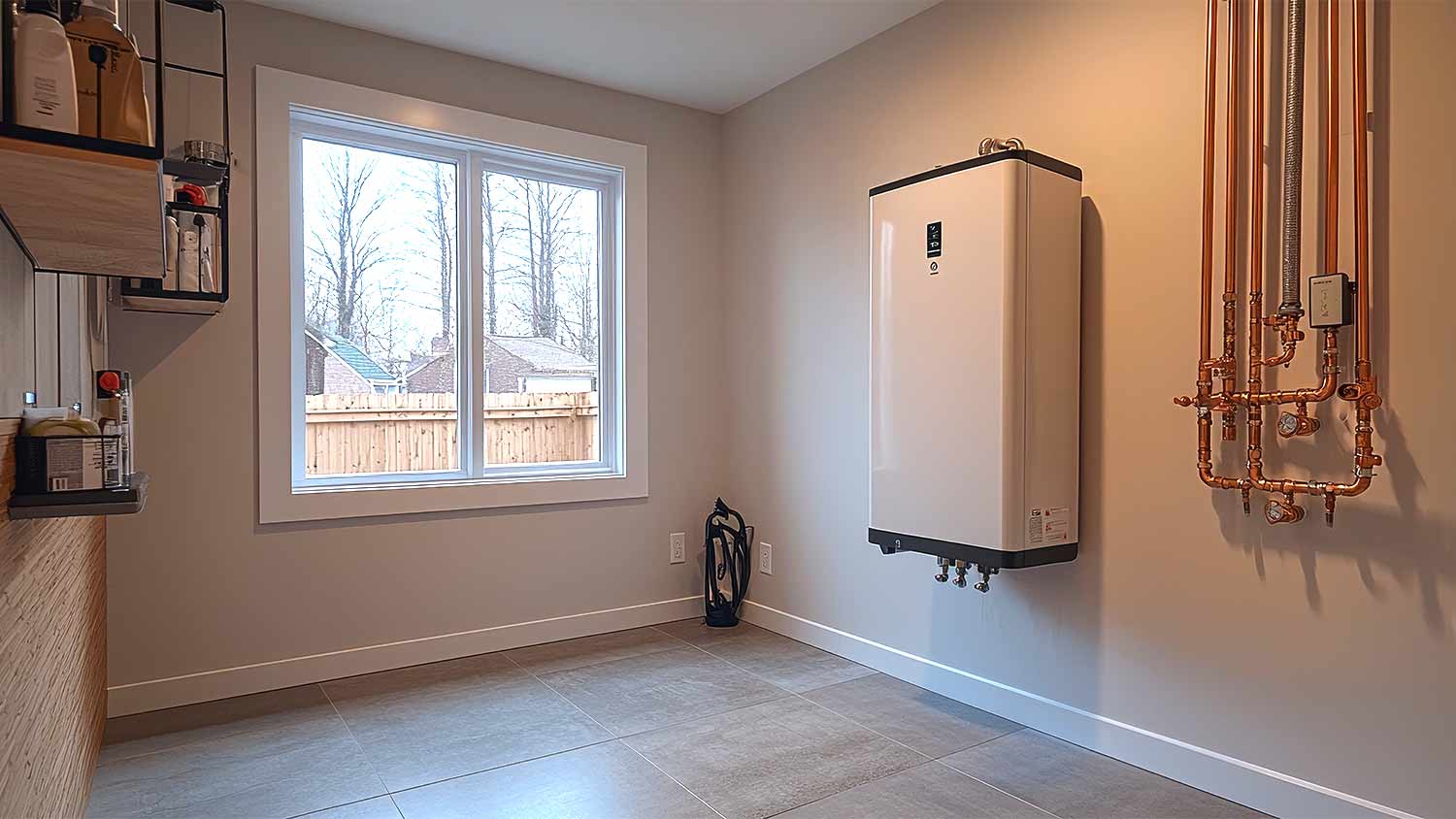
Looking to replace or upgrade your water heater? Use this water heater replacement cost guide to see what the work will cost and what factors affect your total.
Stay comfortable by making some small adjustments


It can be frustrating when your shower water isn’t quite hot enough — or potentially unsafe if it’s always piping hot. Luckily, adjusting the temperature on your water heater is surprisingly quick and easy, and it can even help lower your energy bill. Here’s what you need to know to change the temperature on your water heater yourself, plus when it may be a good idea to hire a pro.
Some DIY repairs are great for saving money and sharpening your skills, but leave larger jobs like water heater repair to the pros. An experienced hand can ensure the task is completed safely and will prevent further damage.
Ideally, water heaters should be set between 120 and 140 degrees Fahrenheit. According to the U.S. Department of Energy, 120 degrees is the minimum setting to slow mineral build-up and corrosion. Anything over 140 degrees could lead to unnecessarily high energy bills or, in some cases, scalding. For that reason, the sweet spot falls somewhere around 130 degrees for most households.

In some cases, your water heater may have letter or symbol settings instead of traditional numbers on the temperature control knob. Here’s what those settings typically mean:
Triangle: 120 degrees Fahrenheit
A: 130 degrees Fahrenheit
B: 140 degrees Fahrenheit
C: 150 degrees Fahrenheit
Very hot: 160 degrees Fahrenheit
Keep these settings in mind when changing the temperature on your water heater.
Luckily, it’s pretty easy to change the temperature settings on your water heater. As long as you know the type of water heater you're adjusting and have a screwdriver handy, you can tackle this task in just a few minutes. While the steps are similar if you have a gas or electric water heater, the process will vary slightly.
Locate the temperature control knob on the unit.
Adjust the knob as needed to increase or decrease the temperature setting. You may need to use a screwdriver depending on the design.
Relight the water heater’s pilot light, if needed.
Turn the power off to your heater at the electrical circuit panel.
Locate the rectangular access panel. There may be one or two, depending on your model.
Open the panels, using a screwdriver if necessary.
Look for a piece of semi-rigid or fiberglass insulation inside. Pinch and pull the insulation out.
Locate the temperature dial.
Turn the dial to your desired temperature. Use a screwdriver if needed.
If you have two access panels, set the top thermostat slightly higher than the bottom.
Replace the insulation.
Close the panels.
Turn the power back on at the circuit panel.
It’ll take the tank a couple of hours to heat the water. After about four hours, check the temperature. Run the hot water tap for a few minutes to remove any remaining cool water. Then, fill a cup with the hot water and test it with a thermometer to make sure it’s accurate.
One of the benefits of a tankless versus storage tank water heater is how easy it is to adjust. For most tankless units, you’ll have an LED display where you can adjust the temperature with the push of a button (like a thermostat.) In some cases, there may still be a dial. Either way, it should be pretty easy to change the temperature on your tankless water heater.
The best way to ensure a consistently comfortable water temperature is to take care of your appliance regularly. There are a lot of water heater components that require maintenance and attention to ensure the appliance lasts as long as possible.
Here are a few tips for how to maintain your water heater.
Schedule an annual inspection from a plumber.
Flush your water heater annually.
Test the temperature relief valve once a year.
Test the water heater thermostat if you suspect it needs replacement.
Wrap older water heaters with insulation.
Set the water temperature to the lowest setting that’s still comfortable.
It’s not hard to change the settings on your water heater, but that doesn’t mean there aren’t any safety concerns to be aware of. If you’re uncomfortable working with gas or electricity, you can hire a local water heater repair service to adjust the appliance for you.
And in some cases, it’s not a faulty setting that’s impacting the temperature of your water. For example, if you notice that your hot water heater is making a weird noise or requires increasingly frequent adjustments, it could be a sign that you need a new one altogether.
If that’s the case and you need to hire a local water heater installer to replace your heater, be prepared for a pretty hefty bill. The cost to replace a water heater is between $900 and $1,800, or $1,300 on average. If you need to replace a tankless water heater, the average cost is between $1,200 and $3,500.
From average costs to expert advice, get all the answers you need to get your job done.

Looking to replace or upgrade your water heater? Use this water heater replacement cost guide to see what the work will cost and what factors affect your total.

Wondering how much a water heater expansion tank costs? Use this cost guide to get an accurate estimate and learn how to choose the right one for your home.

While solar water heater costs are a bit higher than a standard system, this energy-saving option could pay for itself in a few years. Here’s what you need to know.

Who can install a water heater for you? Look to hire a water heater installation pro or a licensed plumber for this job because of the challenges involved.

Hot water expansion tanks help protect your home by preventing an overflow of your water tank. Learn why you may need one, how much they cost, and their benefits.

Are you ready to replace your home's water heater? Learn how to replace a gas water heater and whether it's best to DIY or call a pro.